How far apart should speed cushions be placed?
Speed cushions are traffic-calming devices installed on arterial or non-arterial streets without discomforting passengers, drivers, and emergency vehicles.
The response rate of emergency vehicles and other traffic mainly depends on the spacing between installed speed cushions. It must not be too wide or too narrow.
You must know the best ways to install speed cushions in residential streets, roads or other spacing to get maximum benefit. Here are three methods of speed cushion installation layouts to help installation and make them perfect for all kinds of traffic.
Additionally, follow traffic rules and speed cushion regulations when installing so that better calming is achieved.
Do you want to know more about this topic? We also have an article talking about speed cushion regulations.
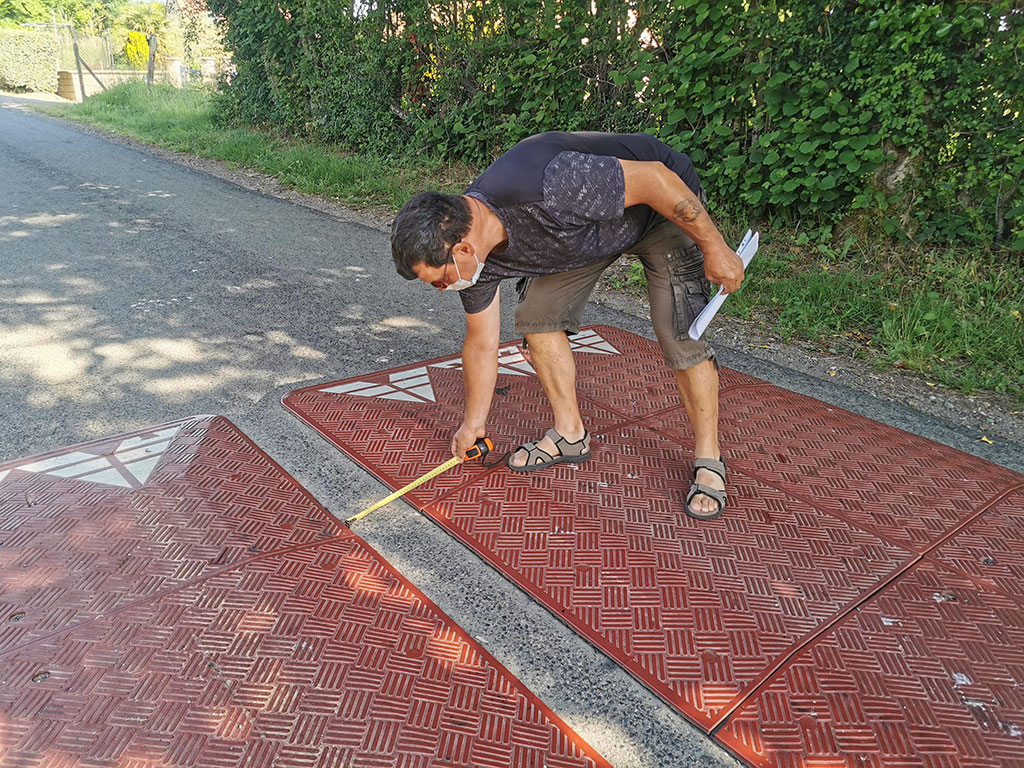
How far apart should the speed cushions be placed?
When installing speed cushions, don’t underestimate spacing between successive speed tables and maintain a reasonable distance between them.
In narrowing conditions, bike lanes and bicycle lanes would suffer similarly; keeping them broadly spaced will allow speeders to go rashly, increasing collision risk, hazards, and fatalities, which is alarming.
Therefore, there are three basic methods of spacing speed cushions in public or private driveways, city streets, and roads and highways.
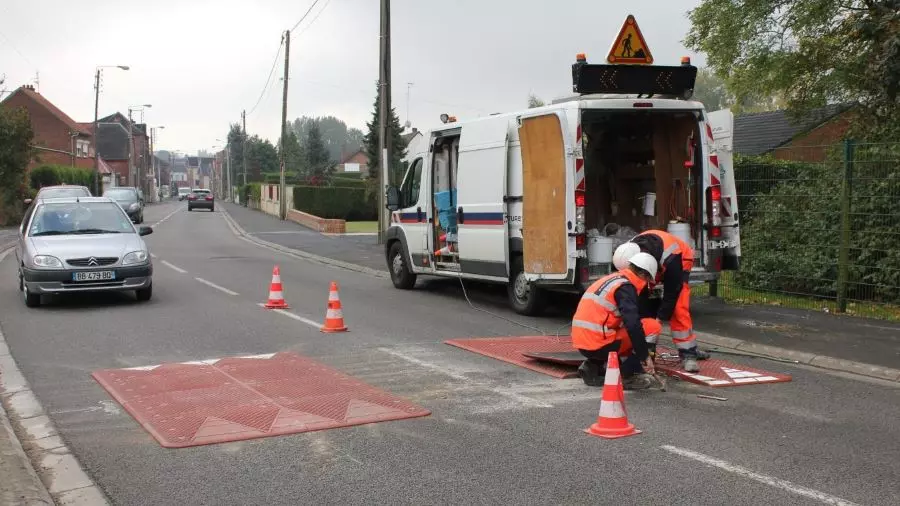
Speed Cushion Installation Method 1
This is the basic speed cushion installation method for better traffic control plans in streets where over-speeding vehicles increase accidents, causing residents problems with property owners.
In this layout, a single-speed cushion combines road speed signs, signage, traffic signals, speed signs, stop signs, parking signs, pedestrian signals, speed limit signs, warning signs, signposts, and traffic control signs to warn about speed limits.
Based on this method, parking lots, parking zones, or other oncoming traffic areas vulnerable to accidents must have speed cushions.
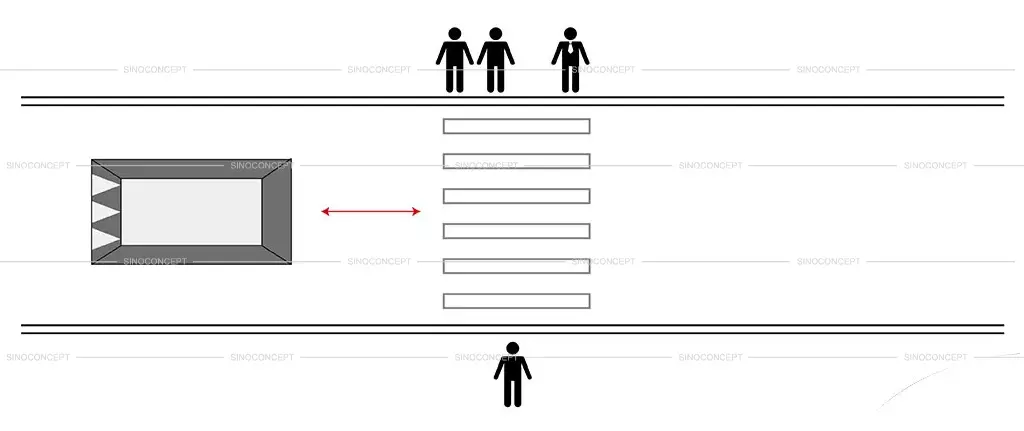
Speed Cushion Installation Method 2
Second-speed cushion installation method is based on the characteristics of the street, road or other areas. Speed cushions are installed in pairs, keeping the distance between them.
This speed cushion installation method is most suitable for school zones, shopping buildings, public works, roundabouts, work zones, road intersections, cut-through roads, and high parking spaces.
These sites have more vehicles at high speeds, and keeping them at a limit with speed cushions is necessary.
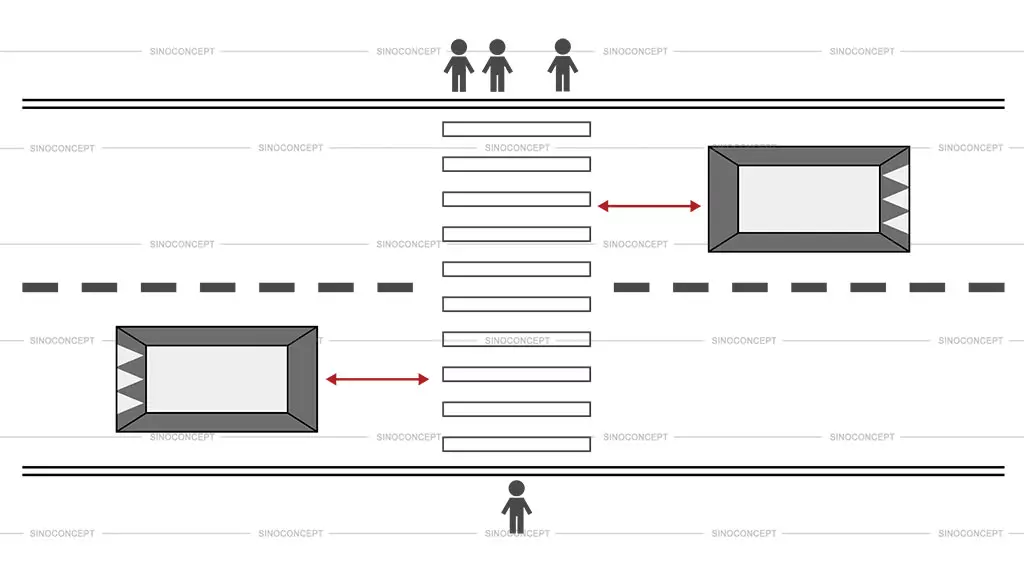
Speed Cushion Installation Method 3
The third and last method of speed cushion installation is their placement in groups. As wider roads, railroads and highways constantly have high traffic, limiting their speed to about 20 (mph) miles per hour ensures controlled traffic flow, so place speed cushions in groups.
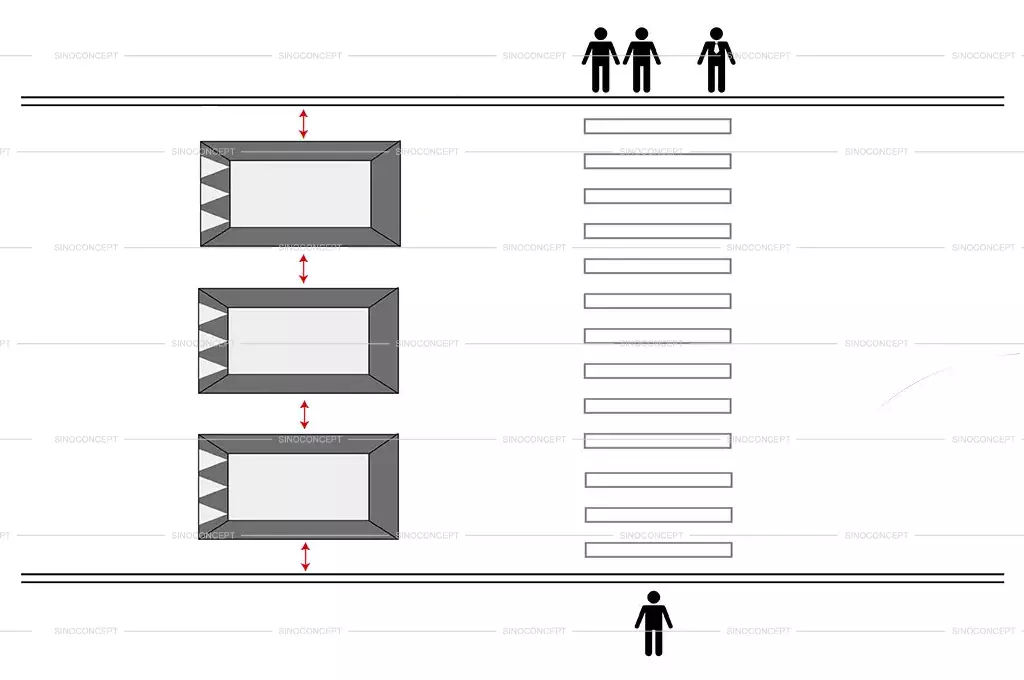
Speed bumps, speed humps, and speed cushions – What’s the difference?
Speed bumps and speed cushions are both traffic calming devices that limit speed and keep it within the range, but the main difference between them is their traffic-controlling feature with their standard design and dimensions.
The appropriate speed-controlling device is selected on the roadway depending on its geometry, traffic characteristics, sight distance, and traffic characteristics such as speed and volume.
Speed bumps are installed in parking lots where average speeds are 5 – 10 mph. While on non-arterial streets, speed humps are used. People often confuse this with speed bumps, but both are entirely different devices.
The speed humps are longer, extending the entire width of the street and are less aggressive than speed bumps. Similarly, speed humps are installed on non-arterial residential streets and are unsuitable for arterial streets.
On the contrary, speed cushions or speed tables are traffic calming measures used in arterial or non-arterial streets with designated emergency routes. In reality, speed cushions are modern or modified versions of speed humps, making the speed least aggressive.
These speed cushions are divided into sections to allow vehicles with larger wheelbases, such as ambulances and fire trucks, to straddle without delaying their response rate.
Buses can also travel over speed cushions without jolting passengers. These are particularly installed for the road safety of bicyclists, motorists and cars.

You have already read a good part of this article, 👀
We've
got the impression that you like it. 🙂
👇🏻
IF YOU ARE LOOKING TO WORK DIRECTLY WITH A MANUFACTURER,
FEEL FREE TO CONTACT US. WE ARE VERY HAPPY TO HELP!
What are the best places to install speed cushions?
Speed cushions are traffic calming devices or traffic control devices that greatly contribute to road traffic management by reducing speed and making the slow zone areas.
Often, road traffic is diverted to a particular city street, driveway, crosswalk, roundabout, roadway, or sidewalk towards the cut-through road or intersections due to road construction, maintenance, or other road construction projects.
Fire trucks and ambulances are also assigned different routes for better traffic flow. To bear this heavy traffic load, roads must not be unsafe for any traffic, including bicycles, motorists, buses, cars or any other vehicular traffic and have properly spaced speed cushions.
Additionally, the roads leading to schools, hospitals, and airports are the most vulnerable to hazards and are the best sites to install.
When speed cushions or other traffic control devices are installed for pedestrian safety and to increase transportation, the purpose of their installation is served. Therefore, intelligent transportation systems increase emergency response, and road safety is linked to these traffic control devices.
Give them special attention, but don’t forget to get the consent of your neighbours or other property owners to ensure speed cushion installation is in the interest of the community and all residents.
When drivers, passengers, and pedestrians have a safe zone to travel to, police enforcement also ensures maximum safety for the people.
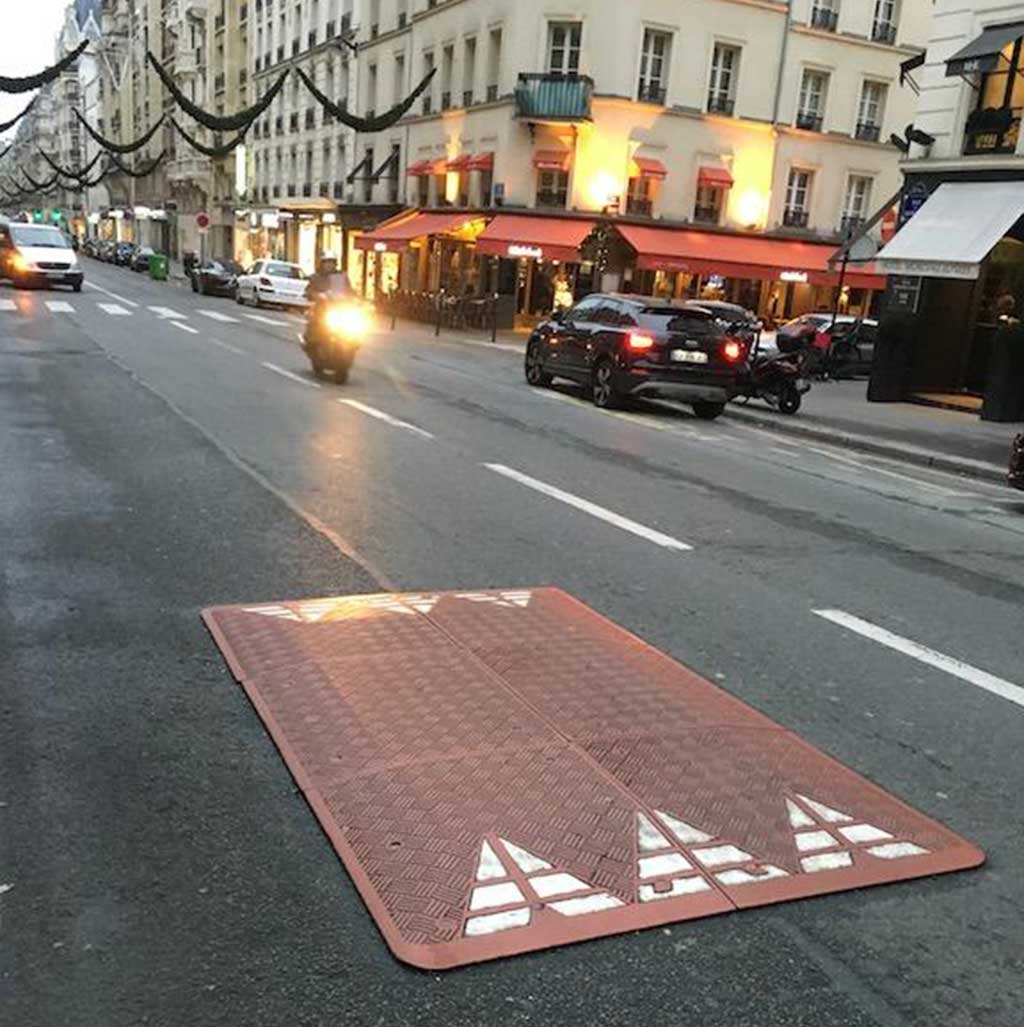
What are the advantages of speed cushions?
There are several advantages of speed cushions, such as:
- Speed cushions are the most flexible, calm and one of the best speed-reducing devices. There is no discomfort, harm or aggression to travelling over speed cushions.
- Speed cushions have a unique modular design, making them most suitable for high-traffic volume areas.
- These traffic calming devices are equally suitable for residential areas, roads or highways.
- Speed cushions can be designed as per the road width and size but keep in the standard dimensions of the UK speed cushions.
- There is no sound or noise with speed cushions, particularly rubber speed cushions, because of their high sound-absorbing power.
- Speed bumps or speed humps jolt the vehicles that are disturbing for the ambulance, but speed cushions give smoother and more friendly travelling expiring.
- Speed cushions are also easy to install, remove and replace at another site.
- One of the best advantages of speed cushions is that they do not obstruct water and ensure proper drainage on the road. Stormwater, drainage pipes or channels have routes on the roads, and they must not get obstructed.
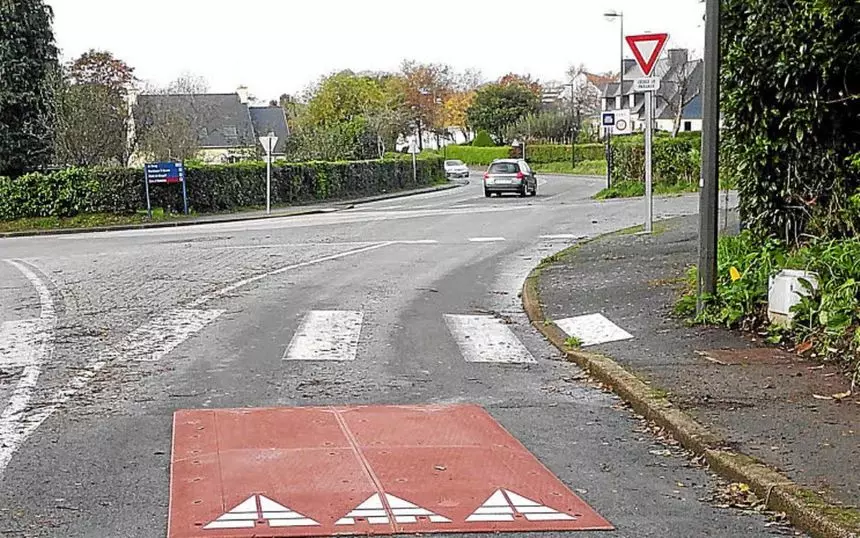
Conclusion
Speed cushions are highly beneficial traffic control devices, and their efficiency increases with proper installation. Must consider streets’ size and traffic volume to space speed cushions on the road.
An important thing one must not forget when installing speed cushions is the preventive measures for the speeding traffic and the workers.
There must be speed barriers, traffic cones, stop lights, or other signs and markings to ensure approaching vehicles can access working on the road.
Secondly, follow standard operating procedures to install speed-limiting devices. If the street is narrower, consider working when traffic is low or give it an alternate route by displaying good signs.
Additionally, if working on the road or broader city street, don’t start the installation of speed cushions all at once. Instead, take one side first and move to the other side, keeping traffic barriers and signs displayed.
👇🏻
IF YOU ARE LOOKING TO WORK DIRECTLY WITH A MANUFACTURER,
FEEL FREE TO CONTACT US. WE ARE VERY HAPPY TO HELP!





















